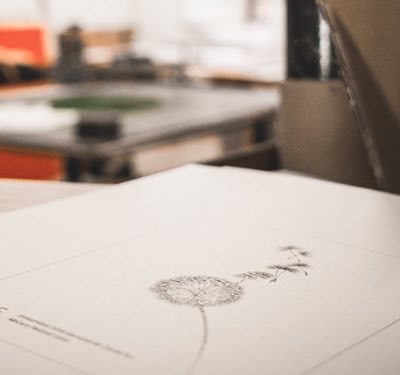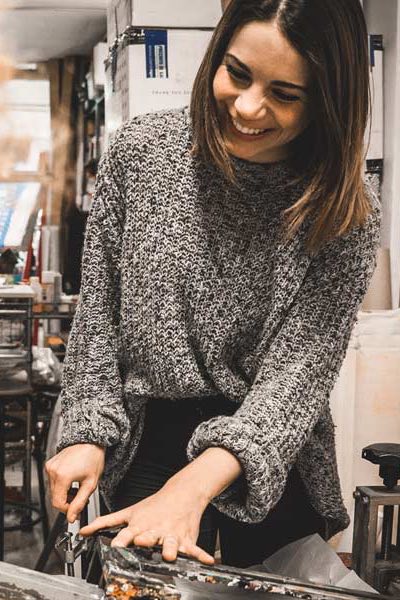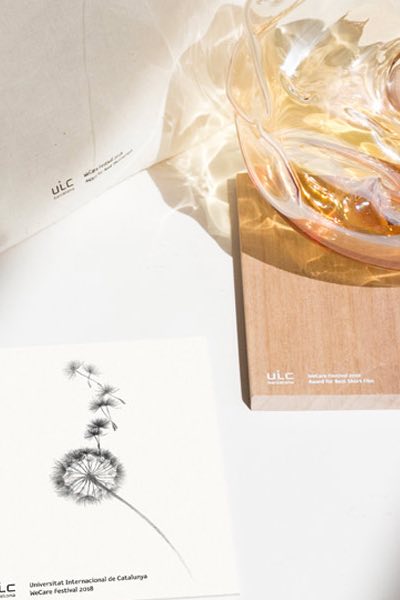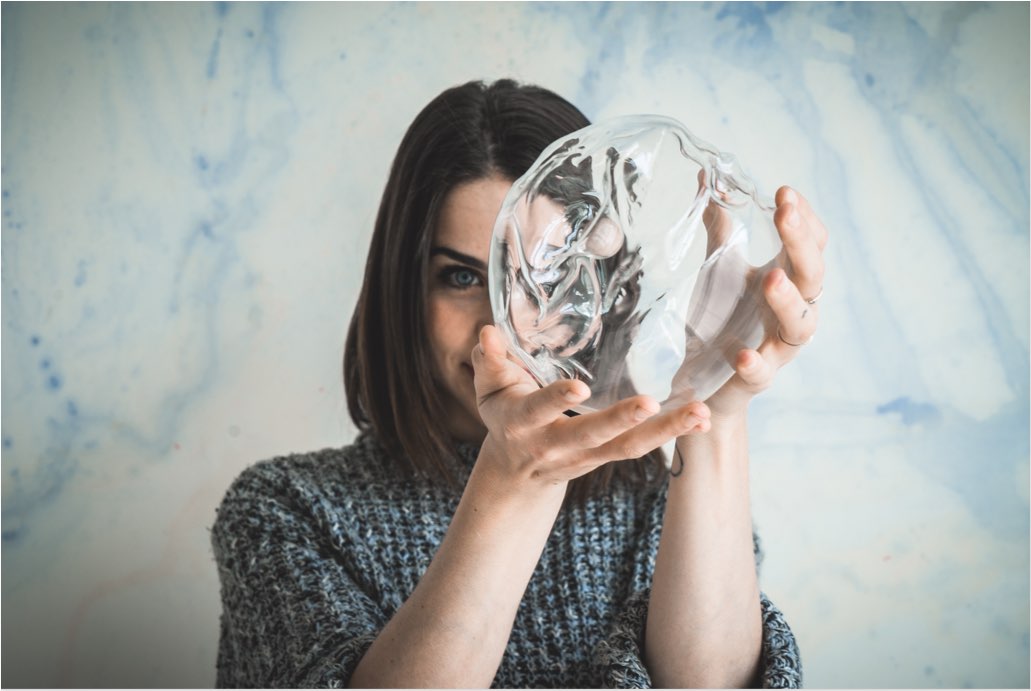Impars Project
Coordinator: Núria Garí
Interview
Text: Ariadna Peinado
Photos: Albert Gordillo
How did you discover your talent to make sculptures?
For a long time, I was involved in design and illustration where I mainly worked using two dimensions. Once I started to use volume it was like discovering a new type of expression, where I felt free, and where materials played an important role. I loved that feeling and decided to continue to try to work intuitively.
When did you make art your profession?
When I was little I loved painting: I was fascinated by painting in art class at school! Although, if I’m honest, I never thought I could make a living from my art, so I started to learn about related professions, such as illustration, design, etc. But in reality I’ve always wanted to go a step further, and in January 2016 I left my job as a designer in a multinational company and decided to go for what I really believe in. I’m very happy to have taken this big step.
What elements of nature do you think would define your personality?
I’m a water sign. I particularly feel relaxed when looking out over the sea, as a symbol of life, of adaptability. For me it symbolises flow.
Is your art the way that you see life? What do you aim to transmit through your art?
“If your work is a creation that comes from the heart, it will inevitably reflect who you are” For that reason, I think it’s important to put a little bit of yourself into each piece. Through my work I am able to transmit values that I think are often not taken into account: also, for me it is a way to learn about them and bear them in mind. I aim to find beauty wherever I look, see the importance of what is imperfect and irregular, experience the passage of time as something positive, it is important that people show themselves as they are without worrying about showing their wounds.
Who are your role models? Do you identify with any artists or movements?
Since I spent a long time working in design I have many role models. I love the Bauhaus movement and its new simple perspectives, high quality materials and geometrical lines (Max Bill for example). I’m also fascinated by architects from the Modern Movement, such as Le Corbusier, Alvar Aalto, Mies van der Rohe or a later member from Japan, Andō Tadao. In terms of artists who are role models, there are many who impress me in different movements, from minimalism to abstract expressionism, such as: Barbara Hepworth, Jean Arp, Constantin Brancusi, Eduardo Chillida, Jorge Oteiz, Helen Frankenthaler, Ellsworth Kelly, Henri Matisse, etc.
Do you share your work with anyone before delivering?
Yes, I love to show it to friends and family. I always tend to upload parts of the making process on social networks, I think it’s important to see how people react to your work.
Where do you go or what do you do when you need to feel inspired?
I seek nature. Leaving the city is always inspiring, travelling to other cities also, but if I need peace at a psychological level, then I like to get away.
For example?
One of the best experiences I’ve had was a Varda Artists Residency, in San Francisco. It was like a dream! The best thing about it was the fact I was able to do it with my sister Marta. We were able to start up a musical-sculptural project together, which we plan to continue in other cities. In fact this summer we’ll be doing another residency together in Florence.
How did the project arise for your latest exhibition Étimo shown at Castellana Gallery?
Castellana 22 Gallery was looking for an emerging sculptural artist who was not yet represented by a gallery. That was how my name got onto a list. The people in charge of the gallery loved my work. When I saw that the gallery was in the middle of a garden inside a minimalist Japanese-inspired building, with glass walls and sunlight filtering through and shadows thrown by the plants, I knew that it was the ideal place for my first solo exhibition. It was an incredible experience to show my work there.
How did you become inspired to create the WeCare trophy?
In reality our bodies, compared to the earth or the universe, are very small. But we are much more than bodies, we are also the “energy” we emit, and the attitude we have in life.





When facing the time that has been given to us…
Yes, exactly, it is the “energy” we fill our environment with that is important, not the time we are here for. This is what can inspire others, help others or simply make the people around us feel good. When our body stops inhabiting this earth, which is part of the natural cycle and is inevitable, this “energy” can continue to be present and continue to inspire other people in order to remain present. This is what I was inspired to represent in my sculpture: we are much more than simply the stage of life we are at or our age.
And why glass?
I was inspired by dandelions, the symbol used for the project, so I tried to reflect their delicacy, fragility and lightness through a piece of hand-moulded glass.
What do you think your trophy has added to the project?
I think that when I thought about the trophy, the fact that they had opted for a young emerging professional like myself said a lot about the people behind this project. They demonstrated that they really care about every detail, and place an importance on both art and design. The truth is that I’m very happy to have been chosen and to be able to apply my passion to creating a trophy that is more of a sculptural piece.
What did you think when you were given the commission?
I saw it as an artistic project, rather than a design. It was like thinking about a sculpture but with a concept behind it. It was also great fun to work with the team, they gave me complete creative freedom, and we had a good connection.
Did the meaning behind WeCare draw your attention?
I’m fascinated that a topic as profound and important as the end of life is being discussed and that recognition is being given to people who are connected to this stage of life, where the work they do is very important and is often not openly recognised.
Had you ever thought about working on this topic before?
I think it is inevitable to think about life and our reasons for being here. It’s a very interesting issue for me and I feel I connected to this project. I had never thought about working on this specific issue before but it was a highly enriching experience.
How would you describe yourself, in five words?
Passionate, tenacious, minimalist, sensitive and curious.
